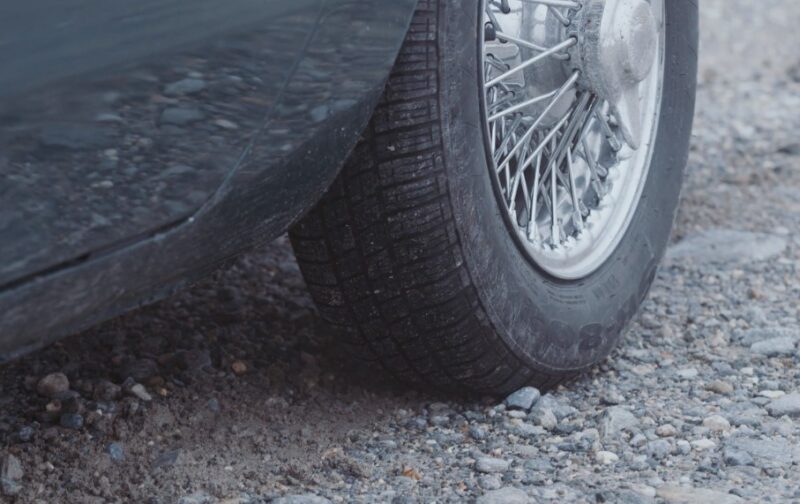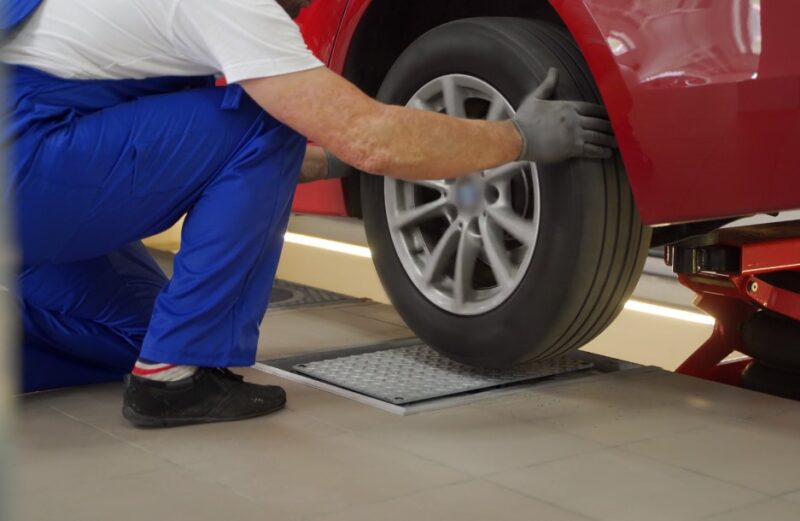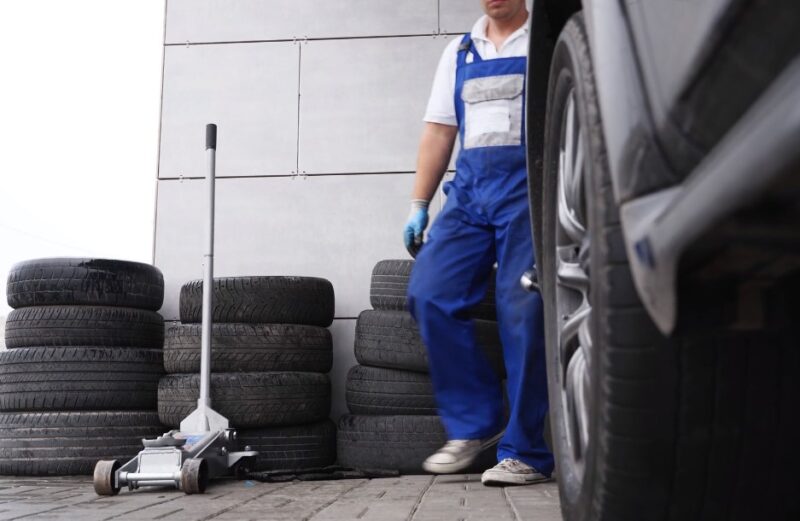It is a common issue among many drivers where they simply forget to pay enough attention to the condition of the tires. You have to keep in mind that this part of the car can affect many features, and even cause issues and risks on the road. Therefore, proper maintenance is as important as servicing the other parts.
Main Causes
The most important part is to learn more about potential causes that can lead to cracks and other issues. That will help you prevent the problem, but also to deal with it in the best possible way.

Environmental Causes
One of the most aggressive factors contributing to tire degradation is exposure to sunlight, particularly ultraviolet (UV) rays. UV rays tend to break down the essential compounds in rubber, making them lose their flexibility and resilience. Over time, prolonged and direct exposure results in the rubber becoming hard and brittle, leading to surface cracks.
Another silent but impactful factor is ozone. Present in our atmosphere, ozone accelerates the rubber’s aging process. Combined with UV rays, it’s one of the main reasons for wear and cracking.
At the same time, temperature changes also play a significant role. Tires operate optimally within specific temperature ranges. Areas that experience severe temperature variations, especially between seasons, witness a contraction and expansion cycle in the rubber.
Pressure
Beyond the environment, the manner in which they are used and maintained plays a crucial role in their condition. While under-inflation causes them to flex more than they should, generating excessive heat and imposing undue stress on the walls, over-inflation makes them stiff and less absorbent to impacts, making them prone to cracking.
Moreover, every product has a life cycle, and tires are no exception. Even with optimal conditions and perfect use, tires age. The rubber compounds that once provided flexibility and grip begin to break down. As this happens, they lose their elasticity, becoming prone to damages, including cracking.
Prevention

The best solution to keep your vehicle in a good state and save a lot of money in the long run is to pay more attention to the maintenance. The same is related to tires.
Regular Maintenance
Every vehicle manufacturer provides recommended pressures, typically found on a sticker on the driver’s side door jamb or in the owner’s manual. Following these recommendations ensures the pressure as designed, reducing increased stress.
Monthly visual inspections are also a great solution. Spending a few minutes scanning your tires for signs of damage, unusual wear patterns, and initial signs of cracking can help detect problems before they lead to more serious issues.
Protection
The environment, as mentioned earlier, poses significant threats to tire health. While one cannot control the weather, protective steps can be taken. Simple actions, like parking your car in the shade, can reduce the direct exposure of tires to harmful UV rays.
In cases where vehicles are expected to be stationary for extended periods, especially in open spaces, using protective tire covers can shield them from direct sunlight and other environmental factors.
Additionally, various tire protectant products available in the market offer UV protection, adding a layer of defense against sun and ozone-induced degradation.
How to Handle Cracked Tires?

It is essential to have the right approach towards dealing with this issue. There are many myths and misconceptions that will only lower the performance or even increase the risks while driving.
Inspection
When you notice cracks in your tire, the initial step should be a thorough assessment. We should add that not all cracks are dangerous since there are mild ones where you can continue driving without any problems.
However, deeper cracks, especially those that penetrate the tire’s inner layers, are critical and demand immediate attention. The depth, location, and spread of the crack can significantly influence its impact on tire safety.
Call an Expert
If unsure about the severity of the crack or if the cracks appear deep and widespread, the best solution is to consult a professional. Tire specialists or mechanics can provide a detailed evaluation and guide on the best course of action.
In many cases, especially where the tire’s structural integrity is in question, replacement might be the safest bet. While this may seem like an added expense, it’s a small price to pay for ensuring safety on the road.
Never Ignore the Problem

There are some light signs of damage that you can ignore, at least for some time. However, continuing to drive while there are bigger issues with tires is never recommended. That is the main reason why having a spare tire in the trunk is so important in the first place.
Besides that, driving with tires in such condition will reflect on other parts of the car.
Poor Vehicle Performance
Tires directly influence how a vehicle handles on the road. A tire with cracks, even if superficial, can alter its contact with the road, leading to diminished grip.
Over time, this can result in unpredictable vehicle behavior, especially during maneuvers, braking, or in adverse weather conditions. Reduced traction can elongate stopping distances, making sudden brakes less effective and potentially leading to accidents.
Increased Wear and Tear
Driving on cracked tires doesn’t just affect the tires themselves. The vehicle’s entire suspension system is designed around the premise of working with healthy tires. Damaged tires can result in uneven weight distribution and altered force dynamics.
Moreover, this can lead to accelerated wear and tear on parts like shock absorbers, struts, and even the chassis. This not only translates to more frequent maintenance but also unexpected and often costly repairs.
Reduced Fuel Efficiency
Tire health directly correlates with a vehicle’s fuel efficiency. Cracked tires can alter the optimal rolling resistance—a key factor in determining how much energy is needed to keep the vehicle moving.
When the rolling resistance increases due to compromised tire health, the engine works harder, consuming more fuel. In the long run, this can lead to increased fuel expenses and also contribute to greater carbon emissions.
FAQs
Can cracked tires be repaired, or do they need immediate replacement?
Repairing cracked tires depends on the severity and location of the cracks. Superficial cracks on the tire’s sidewall can often be safely repaired by a professional. However, if the cracks are deep or extend into the tire’s inner layers, it’s safer to opt for a replacement to ensure long-term safety.
Are there any DIY remedies to prevent tire cracking at home?
DIY remedies can help prevent tire cracking to some extent. Regularly applying tire protectants with UV blockers can offer protection against sunlight and ozone. However, these are not permanent solutions, and proper tire maintenance and professional inspections are crucial for long-term prevention.
Can tire cracking be covered by warranty, and for how long are tires typically covered?
Tire warranties often cover manufacturing defects but not normal wear and tear, including cracking. However, some premium tire brands offer limited warranties that include coverage against certain types of damage, including cracking, for a specific duration. Check your tire’s warranty documentation for details.
Final Thoughts
While personal monthly inspections are essential, it’s equally crucial to have your tires professionally checked at least once a year. Mechanics possess the tools and expertise to spot issues that might be invisible to the untrained eye.
They can provide actionable insights, recommend treatments, or advise on replacements when necessary.
